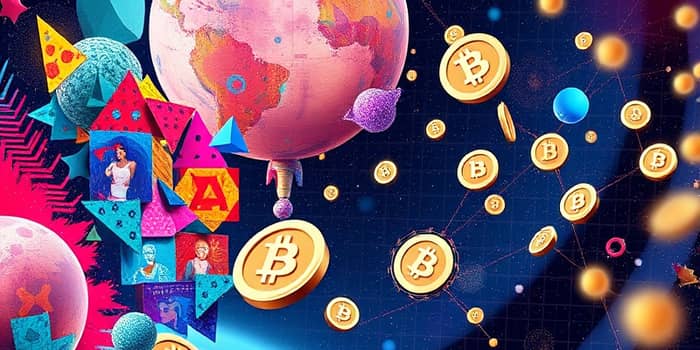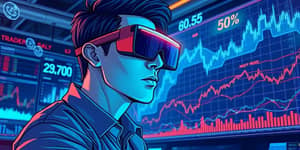
The non-fungible token (NFT) market has captured headlines and wallets alike, sparking debates about digital ownership and speculative bubbles. As blockchain technology matures, investors face a choice: join the frenzy or wait on the sidelines. This article offers an in-depth exploration of what NFTs are, how they work, and whether they align with your investment goals.
NFTs are unique digital tokens on a blockchain, most commonly using standards like ERC-721 or ERC-1155 on Ethereum. Each token carries metadata that points to an asset—often a digital image, video, or collectible—and records a permanent, tamper-proof history of ownership. This immutable ledger of provenance distinguishes NFTs from ordinary digital files and underpins their value proposition.
Unlike fungible cryptocurrencies such as Bitcoin or Ether—where each unit is interchangeable—each NFT is entirely distinct. Token metadata can embed details like the creator’s name, creation date, and a link to the hosted media file. While this adds authenticity, it also introduces complexity: storage of the actual asset often relies on external systems like IPFS, which can create vulnerabilities if not managed properly.
Acquiring an NFT grants you ownership of the token, but not always copyright or reproduction rights to the underlying work. This separation means collectors hold a blockchain receipt rather than traditional intellectual property. Smart contracts can automate royalty payments, sending a percentage of each secondary sale back to the creator, a feature that rewards artists perpetually and aligns long-term incentives.
The NFT market exploded between 2020 and 2021, skyrocketing from $82 million in trading volume to over $17 billion in just one year. High-profile sales, such as Beeple’s “Everydays” NFT fetching $69 million at Christie’s, fueled global fascination. Celebrity endorsements and brand partnerships added mainstream legitimacy, pushing prices to dizzying heights.
Yet by 2022, the market experienced a dramatic reversal. Daily active buyers on platforms like OpenSea fell from roughly 350,000 in September 2021 to under 10,000 by early 2023. Overall transaction volume shrank by 90%, and by late 2023 more than 95% of NFT collections had effectively no trading value. These figures underscore the inherent volatility of digital collectibles and the risks of late-stage entries.
Several factors contributed to this downturn: a broader crypto market slump, rising interest rates, and heightened skepticism over utility. Investors who entered during the hype often found themselves holding tokens with little secondary demand or clear purpose, illustrating the perils of speculative fervor.
The market’s trajectory reads like a classic bubble cycle: rapid expansion, plateau, and abrupt contraction. Understanding these dynamics is crucial before diving in.
Despite headwinds, NFTs offer unique benefits that may appeal to forward-looking investors. First and foremost is verifiable scarcity and authenticity. Blockchain timestamps and cryptographic proofs make counterfeiting nearly impossible, providing collectors with confidence in provenance.
Fractionalization platforms allow investors to buy shares in high-value artworks or real estate NFTs, lowering entry barriers. For instance, tokenized property investments enable diversified exposure without the need for a six-figure down payment.
Community-oriented NFT projects often grant members exclusive access to events or decision-making forums, strengthening engagement. The Bored Ape Yacht Club, for example, has hosted both virtual and in-person gatherings, fostering a sense of belonging among holders.
Additionally, NFTs democratize art patronage. Emerging artists can reach global audiences instantly, bypassing traditional gatekeepers. Collectors, in turn, may discover undervalued talent, positioning themselves for potential upside as careers take off.
No investment is without risk, and NFTs come with a unique set of challenges. Price swings can be extreme: certain collections have lost 99% of their peak value within months. This highly speculative environment demands caution and robust risk management.
Buyers must remain vigilant against fake or plagiarized listings, and thoroughly vet smart contracts to avoid hidden vulnerabilities. Regulatory agencies around the world are still determining how to classify NFTs, potentially subjecting them to new taxes or compliance requirements.
Technical risks also loom large. Losing access to a private key means losing the associated NFTs forever. Smart contract bugs can be exploited, leading to hacks or frozen assets. These dangers illustrate the need for secure wallets and reputable marketplaces.
Art and collectibles remain the driving force behind most NFT activity, but innovators are exploring broader applications. In real estate, tokenization platforms issue NFTs representing fractions of property deeds, enabling fluid trading of real-world assets.
Musicians and record labels leverage NFTs to sell limited-edition tracks or albums, incorporating smart contracts to distribute streaming revenue shares directly to token holders. This streamlines royalty distribution and fosters deeper fan engagement.
In the gaming sector, developers implement NFT-based items and characters that players truly own. These tokens can migrate across interoperable worlds, granting economic autonomy and potentially unlocking new revenue streams for gamers and creators alike.
NFT investments are best suited for individuals who can tolerate significant price volatility and have a genuine interest in the underlying technology or community. Die-hard collectors, blockchain enthusiasts, and certain alternative asset allocators may find NFTs compelling.
Setting clear investment criteria and budgets is essential. Diversifying across established and emerging collections can mitigate some risk, but due diligence remains the strongest defense against fraud and hype-driven purchases.
The regulatory landscape surrounding NFTs is evolving. In the European Union, the Markets in Crypto-Assets Regulation (MiCA) aims to clarify digital asset classifications, while the US Securities and Exchange Commission continues to scrutinize token offerings for potential securities violations.
Environmental sustainability has also become a focal point. As Ethereum transitions fully to proof-of-stake, carbon footprints shrink dramatically, addressing one of the most potent criticisms leveled at NFT ecosystems.
Long-term success for NFT investments depends on genuine utility, legal clarity, and technological resilience. While speculative spikes will persist, projects that deliver tangible value—whether through community engagement, real-world asset integration, or innovative use cases—stand to endure.
Ultimately, NFTs represent an experimental frontier at the intersection of technology, creativity, and finance. By balancing enthusiasm with careful analysis, investors can navigate uncertainty and potentially capitalize on opportunities in this rapidly evolving landscape.
References













